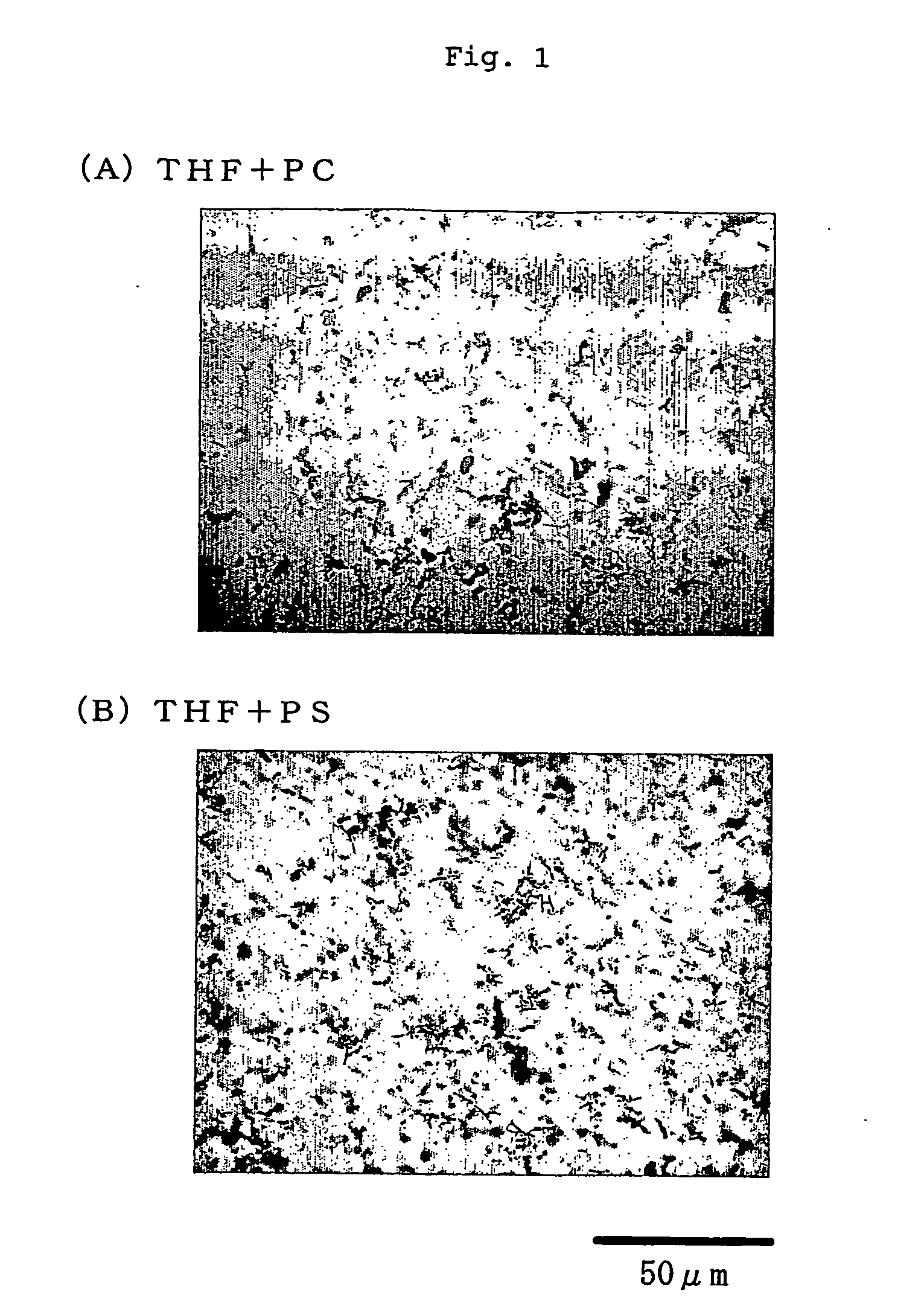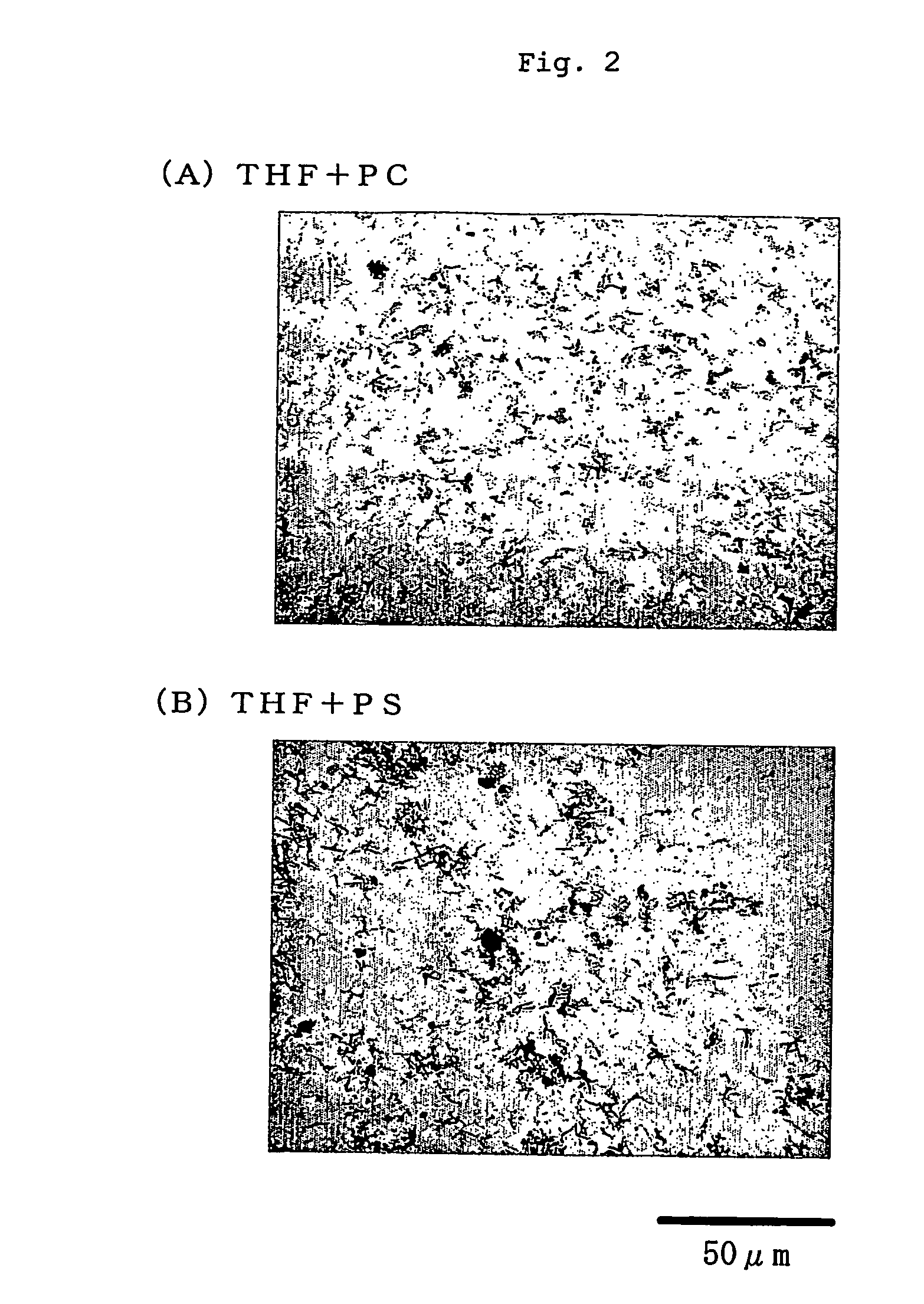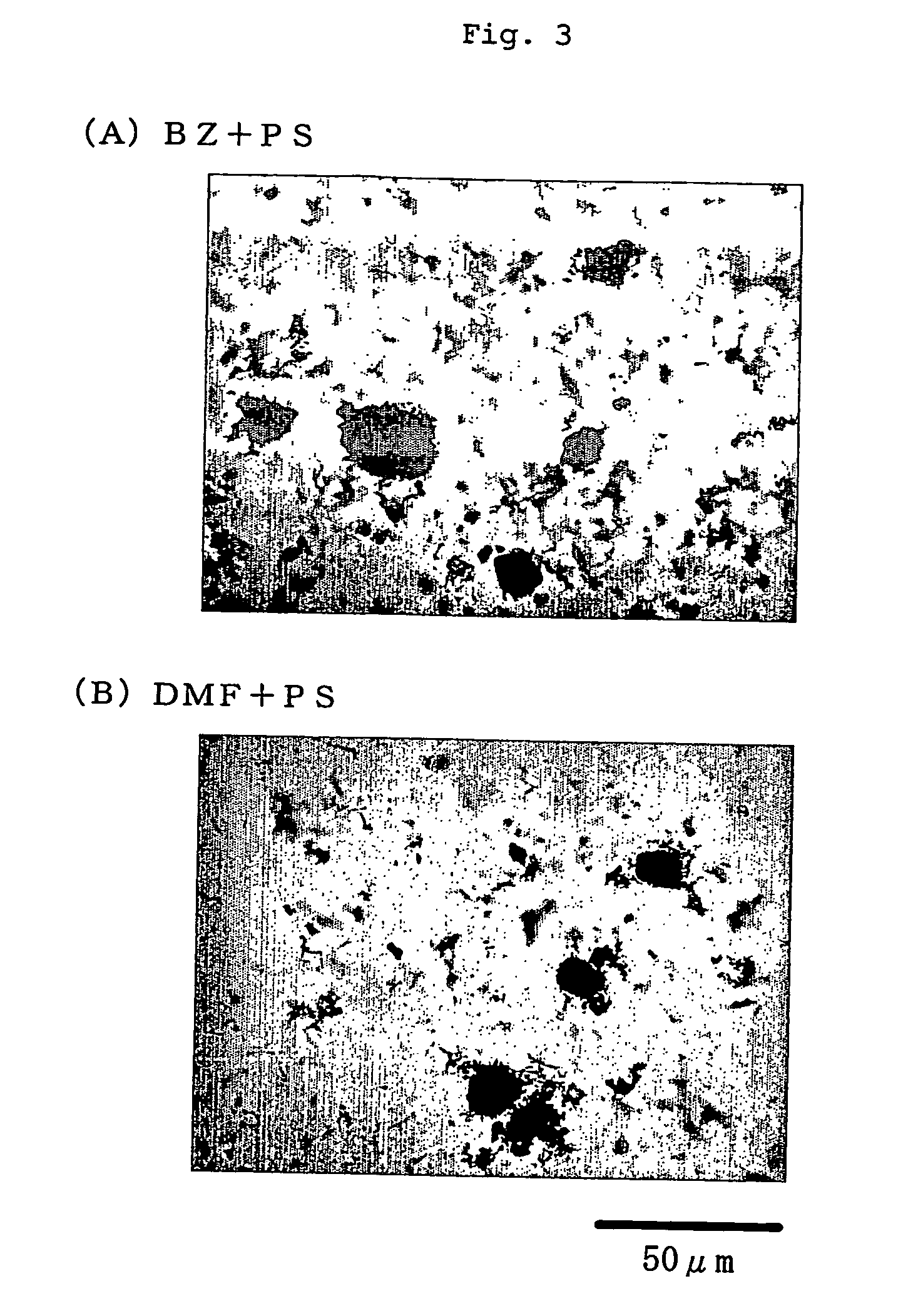Carbon fiber-containing resin dispersion solution and resin composite material
- Summary
- Abstract
- Description
- Claims
- Application Information
AI Technical Summary
Benefits of technology
Problems solved by technology
Method used
Image
Examples
example 1
[0048] A 10 mass % solution of polycarbonate (PC; product of Teijin Chemicals Ltd., AD5503; number average molecular weight=20,000, mass average molecular weight=32,000) in tetrahydrofuran (THF) was prepared. To the solution, vapor grown carbon fiber (VGCF, registered trademark, product of Showa Denko K. K.) having a fiber diameter of 0.15 μm and an aspect ratio of 70 and having undergone heat treatment at 2,800° C. was added in an amount of 0.2 mass %, followed by mixing with a mechanical stirrer at 600 rpm for 30 minutes. A dispersion in which the vapor grown carbon fiber was uniformly dispersed was obtained. After the dispersion was left to stand for seven days at room temperature, precipitation of vapor grown carbon fiber was not observed. Observation under an optical microscope confirmed that individual filaments of VGCF (registered trademark) were quite excellently dispersed. Spin coating was performed by applying several droplets of the dispersion onto a cover glass and rotat...
example 2
[0050] The combination of polystyrene (PS) and THF employed in Example 1 was modified to use benzene (BZ) or dimethylformamide (DMF) instead of THF, to thereby produce a dispersion and form a thin film through spin coating.
[0051]FIGS. 3 and 4 show optical micrograph images of the dispersions and thin films obtained.
example 3
[0052] A solution was prepared by dissolving 5 mass % polyamic acid (which is a precursor of polyimide) in a solvent prepared by mixing N-methyl-2-pyrrolidone, γ-butyrolactone, and butyl cellosolve at proportions of 30:30:35 by mass % and adding thereto. VGCF (registered trademark) was added to the solution in an amount of 2 mass % or 5 mass % on the basis of polymer, followed by stirring at 200 rpm for 20 minutes with a magnetic stirrer. The mixture was left to stand at room temperature for 7 days. Both of the dispersion containing 2 mass % VGCF (registered trademark) and the dispersion of 5 mass % VGCF (registered trademark) were found to be free from precipitation of vapor grown carbon fiber. Observation under an optical microscope confirmed that individual filaments of VGCF (registered trademark) were quite excellently dispersed. The optical micrograph is shown in FIG. 5. A thin film of a composite was formed through spin coating by applying several droplets of the dispersion on...
PUM
| Property | Measurement | Unit |
|---|---|---|
| Length | aaaaa | aaaaa |
| Percent by mass | aaaaa | aaaaa |
| Percent by mass | aaaaa | aaaaa |
Abstract
Description
Claims
Application Information
 Login to View More
Login to View More - R&D
- Intellectual Property
- Life Sciences
- Materials
- Tech Scout
- Unparalleled Data Quality
- Higher Quality Content
- 60% Fewer Hallucinations
Browse by: Latest US Patents, China's latest patents, Technical Efficacy Thesaurus, Application Domain, Technology Topic, Popular Technical Reports.
© 2025 PatSnap. All rights reserved.Legal|Privacy policy|Modern Slavery Act Transparency Statement|Sitemap|About US| Contact US: help@patsnap.com



